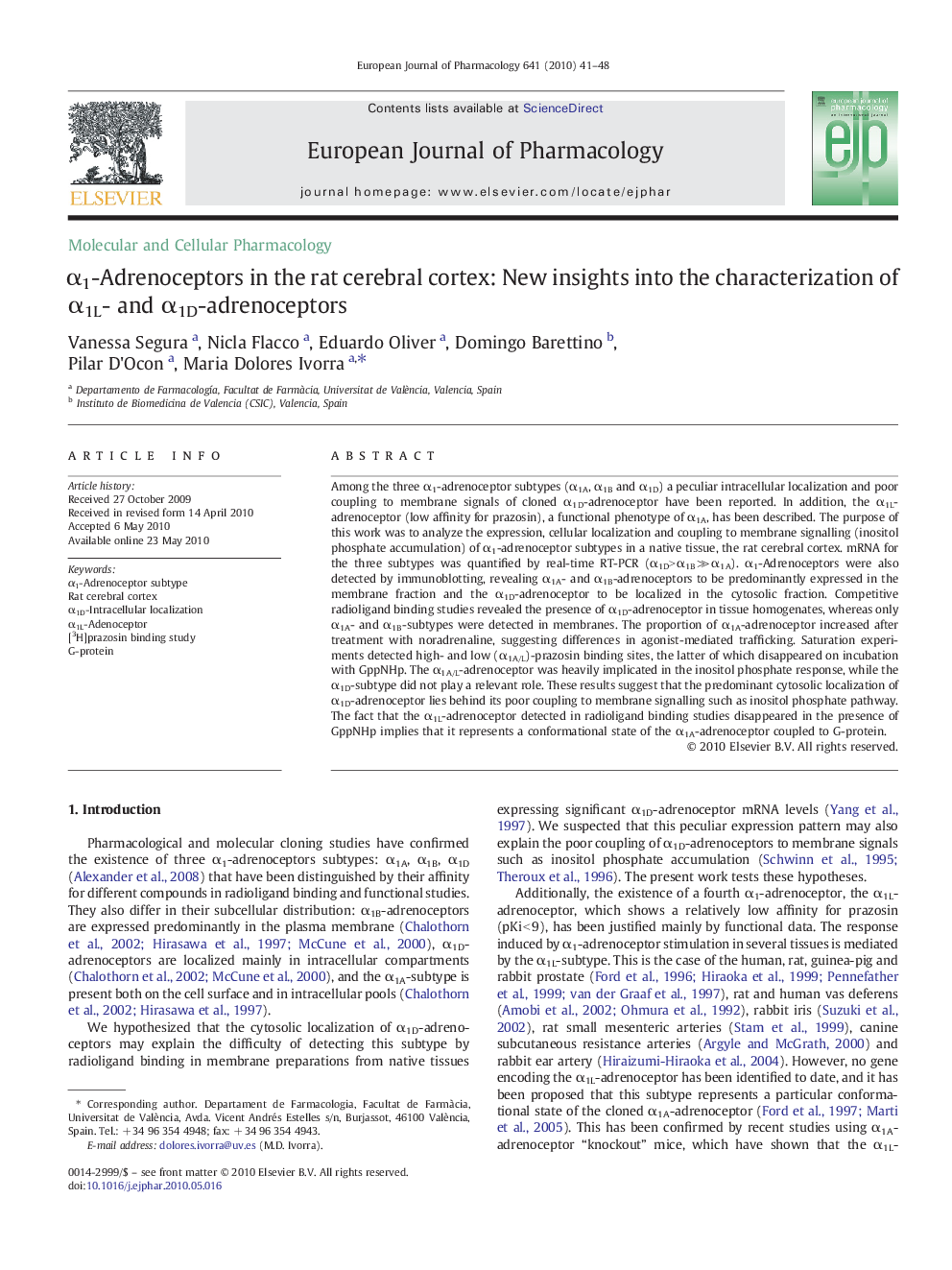| Article ID | Journal | Published Year | Pages | File Type |
|---|---|---|---|---|
| 2533457 | European Journal of Pharmacology | 2010 | 8 Pages |
Among the three α1-adrenoceptor subtypes (α1A, α1B and α1D) a peculiar intracellular localization and poor coupling to membrane signals of cloned α1D-adrenoceptor have been reported. In addition, the α1L-adrenoceptor (low affinity for prazosin), a functional phenotype of α1A, has been described. The purpose of this work was to analyze the expression, cellular localization and coupling to membrane signalling (inositol phosphate accumulation) of α1-adrenoceptor subtypes in a native tissue, the rat cerebral cortex. mRNA for the three subtypes was quantified by real-time RT-PCR (α1D> α1B ≫ α1A). α1-Adrenoceptors were also detected by immunoblotting, revealing α1A- and α1B-adrenoceptors to be predominantly expressed in the membrane fraction and the α1D-adrenoceptor to be localized in the cytosolic fraction. Competitive radioligand binding studies revealed the presence of α1D-adrenoceptor in tissue homogenates, whereas only α1A- and α1B-subtypes were detected in membranes. The proportion of α1A-adrenoceptor increased after treatment with noradrenaline, suggesting differences in agonist-mediated trafficking. Saturation experiments detected high- and low (α1A/L)-prazosin binding sites, the latter of which disappeared on incubation with GppNHp. The α1A/L-adrenoceptor was heavily implicated in the inositol phosphate response, while the α1D-subtype did not play a relevant role. These results suggest that the predominant cytosolic localization of α1D-adrenoceptor lies behind its poor coupling to membrane signalling such as inositol phosphate pathway. The fact that the α1L-adrenoceptor detected in radioligand binding studies disappeared in the presence of GppNHp implies that it represents a conformational state of the α1A-adrenoceptor coupled to G-protein.
